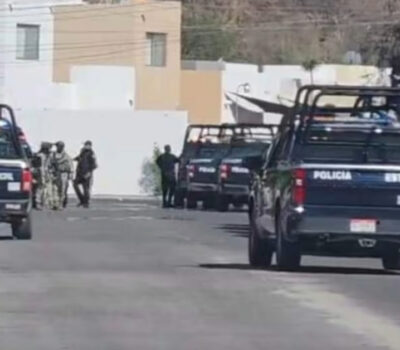Puerto Vallarta (PVDN) – In Mexico, 7,364,645 people speak an indigenous language, which represents 6% of the total population to date. The most widely spoken are Náhuatl, Maya, and Tseltal, according to the National Institute of Statistics and Geography (INEGI).
The visibility of these communities is important. For this reason, INEG published an interactive map on its website in 2020, with the aim of showing the percentage of the population that speaks an indigenous language in Mexico. The entities with the highest figures are Oaxaca (31.2%), Chiapas (28.2%), Yucatán (23.7%), Guerrero (15.5%), Hidalgo (12.3%), Quintana Roo (11.7%) and Campeche (10.4%).
Each of these communities enjoys rights in favor of their preservation and access to justice, established in the General Law of Linguistic Rights of Indigenous Peoples, published in the Official Gazette of the Federation (DOF) in 2003. However, the Movement of Indigenous Peoples, Communities and Organizations of Mexico City (MPCOMN) warned, in this community on February 14, that half of the mother tongues could disappear due to the low budget allocated to the National Institute of Indigenous Languages (INLI).
The people who keep their linguistic culture alive are located in different regions of the country. The Mexican government has established a division of the number of mother tongues existing in each state to date, in coordination with the Cultural Information System.
This instance compiled specialized information on the subject and defined a total of 68 indigenous languages. Chiapas has 12; in Baja California and Veracruz, there are five in both entities. Guanajuato, Jalisco, Nayarit, Tlaxcala, Coahuila, Durango, Hidalgo, Michoacán and Yucatán have one. San Luis Potosí, Tabasco, Puebla and Chihuahua have two. In the State of Mexico and Guerrero, there are three each. In Campeche and Sonora, six were identified in each state. Finally, Oaxaca appears with 11.
Even in the capital, there are 139 towns and 58 native neighborhoods, whose most spoken languages are Náhuatl, Mixteco, and Otomí, according to Ciudad Defensora magazine, published by the Mexico City Human Rights Commission ( CDHCM) in September 2020. The publication also clarifies that more than 50% of the CDMX territory is made up of these communities of pre-colonial origin.
Indigenous languages in danger of extinction
The native languages and their speakers have been recognized before Mexican legislation, with the General Law of Linguistic Rights of Indigenous Peoples. Article 13, section I, establishes that the state must protect, preserve and promote indigenous languages.
In addition, with article 14, the government created the National Institute of Indigenous Languages (INLI) with the aim of strengthening and coordinating the development of native languages. One of the most important legal considerations is the one that refers to the assets of the INLI.
Article 21, section I, stipulates that the government must contribute an annual amount to make up the INLI’s assets. However, the statement of the Movement of Indigenous Peoples, Communities and Organizations of Mexico City (MPCOMN), released on February 14 of this year, warned that the budget for 2023 is $64,696,287 pesos.
The amount, according to the document, is insufficient for INLI to fulfill the objective of its creation. In addition, the movement warned that half of the indigenous languages are at risk of disappearing, as one of the consequences of the low funding available for this year.
Puerto Vallarta (PVDN) - In Mexico, 7,364,645 people speak an indigenous language, which represents 6% of the total population to date. The most . . .











